Zoo InternQuest is a seven-week career exploration program for San Diego County high school juniors and seniors. Students have the unique opportunity to meet professionals working for the San Diego Zoo, Safari Park, and Institute for Conservation Research, to learn about their jobs, and then blog about their experience online. Follow their adventures here on the Zoo’s website!
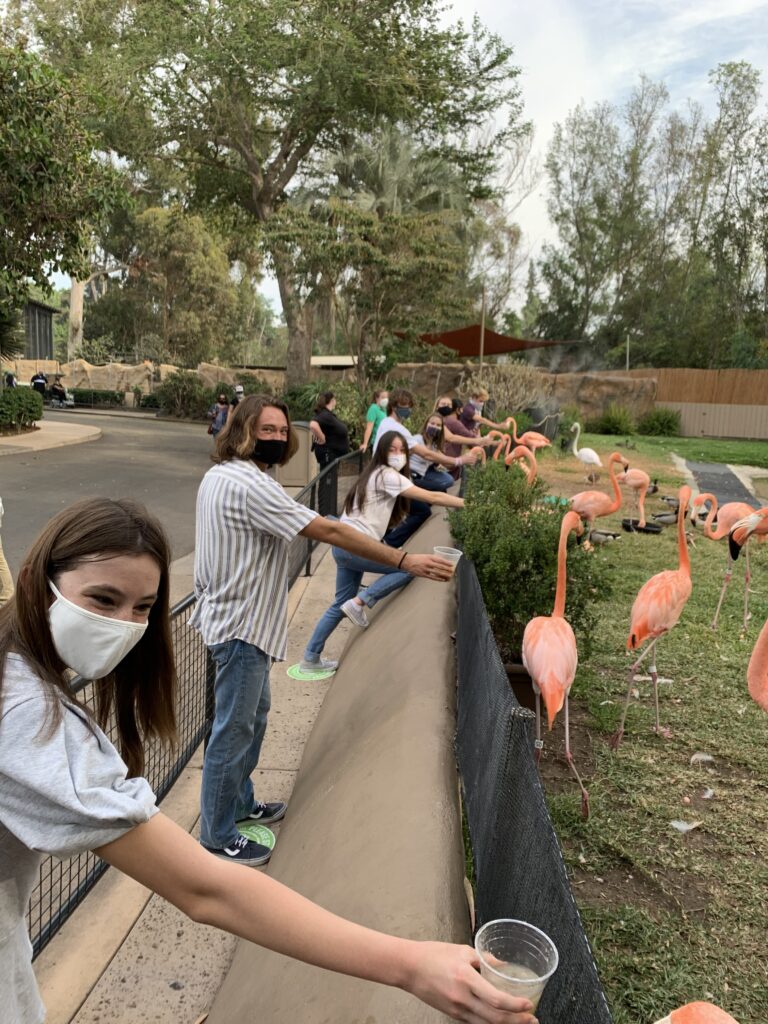
Everyone wants to come face to face with a cheetah, to see a sloth munch on a grape, or to witness an armadillo roll up into a ball. The Animals in Action program at the San Diego Zoo provides people with this opportunity. Wildlife Care Specialists work to train these animal ambassadors in order to showcase the animals’ unique abilities and represent the animal kingdom to the general population. By using animal ambassadors and with the help of Wildlife Care Specialists, guests are able to personally connect not only with the animals but with the issues they face. This connection gets the public motivated about conservation work.
This week we had the honor of meeting Ms. Kelly Elkins, a Lead Wildlife Care Specialist at the San Diego Zoo. Ms. Elkins has worked at the Zoo for 15 years and has become an integral part of the Animals in Action program. Ms. Elkins’ goal is for guests to make a connection with these species and hopefully influence them to take a stand in protecting wildlife. Ms. Elkins was originally a dance teacher, but quickly realized that animals were what made her truly happy. She began her animal career working at a dog kennel, which is where she had her first experience in training animals. She then realized that training animals was what fit her, so she enrolled at Moorpark College, later getting her degree from the Exotic Animal Training Management program. Ever since her first day at the Zoo, Ms. Elkins has loved every minute of working with these animals.
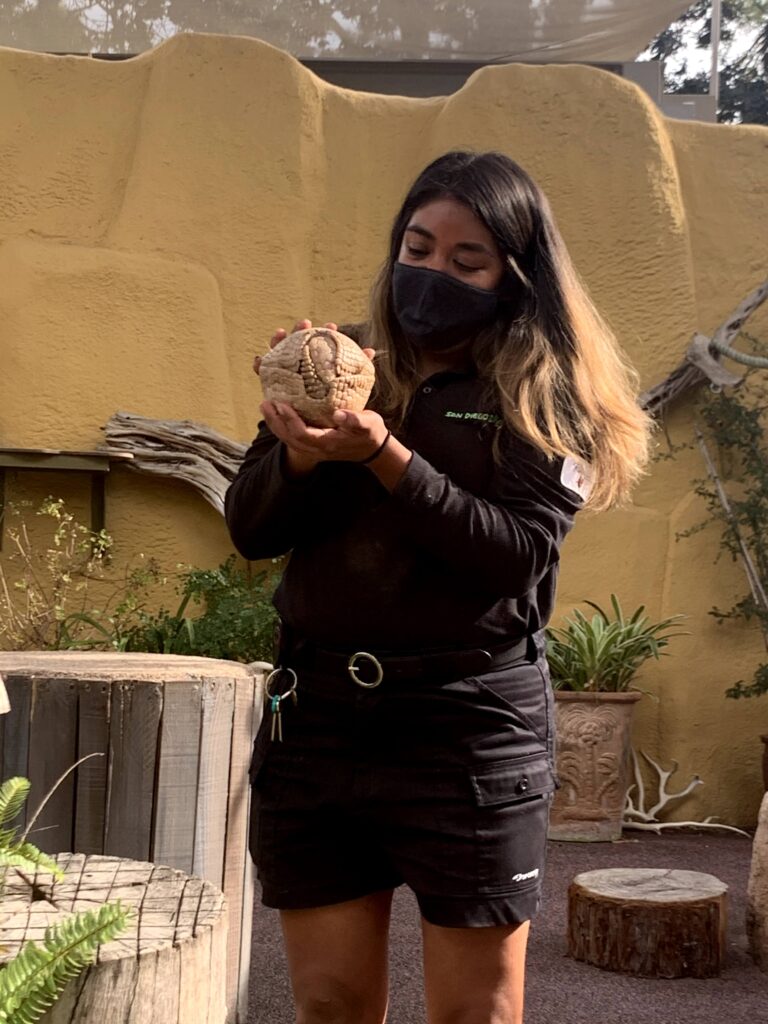
What drives Ms. Elkins to be a Lead Wildlife Care Specialist at the San Diego Zoo is the opportunity to interact with the animals everyday. Whether it be training the Zoo’s wildlife or teaching others how to train, she is always letting her passion shine through. Ms. Elkins describes the experience as an enjoyable puzzle that involves training the animals at a comfortable pace through methods of positive reinforcement, establishing trust, and practicing patience. If you ask Ms. Elkins what animal she’s made the most memorable connection with, she wouldn’t be able to give you an exact answer. Whether it be the binturongs that always keep her on her toes, the smart red-river hog that made her day, or the clouded leopards that simply had a goofy personality, each animal she trains gives her a reason to be excited that day. What makes this position so unique is the constant opportunity to learn. Her exact words were, “If I wasn’t learning, I’d go back to school in a heartbeat!” Throughout her 15 years of experience, Ms. Elkins has also channeled her passion for wildlife as a proud President of the Animal Behavior Management Alliance (ABMA). This not-for-profit organization holds annual conferences where different types of animal trainers present various types of training techniques – all in an effort to learn from each other. Ms. Elkins created a grant for people who do conservation work in the wild which immensely aided trainers in places such as India and Africa. She and other members of ABMA were able to share valuable training methods for the benefit of wildlife.
Training these animals means that Ms. Elkins needs to interpret animal behaviors and what the animals are trying to communicate. Whether they are stressed, excited, or distracted, she needs to act calmly, quickly, and efficiently. Patience is an important skill in this field because both the trainer and the animal can become frustrated when learning something new. Ms. Elkins uses positive reinforcement (often the animal’s favorite treats) to motivate the animal to learn a new behavior. These trained behaviors are a chance to highlight the animals’ unique characteristics, as well as connect guests to worldwide conservation projects. For example, during the Animals in Action program the Zoo’s resident dogs demonstrate their impressive sense of smell by finding hidden plush poop emojis. Meanwhile in Africa, the Action for Cheetahs in Kenya project uses the help of trained dogs to find cheetah scat in order to make sure there is a sufficient number of cheetahs in an area, and collect data on those cheetahs.
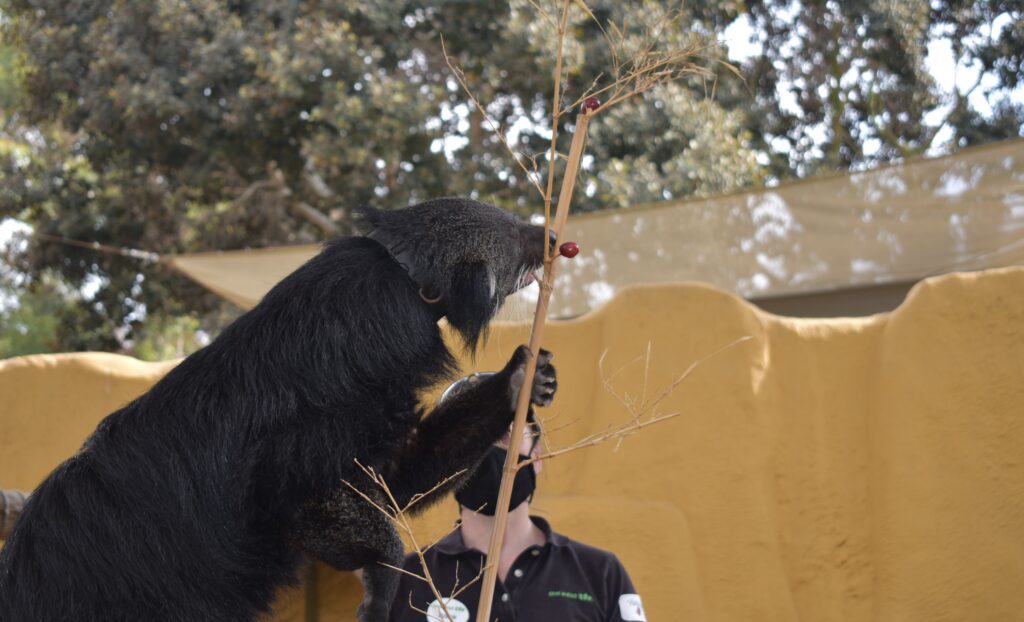
With its long claws and broad tail, the binturong that the interns met today had an infectious charm. These animals are found in southeast Asian rainforests and are sometimes referred to as ‘bearcats’ due to their resemblance to both bears and cats, despite not being closely related to either. In their rainforest habitats, binturongs are opportunistic eaters with a diet of birds, fish, eggs, small mammals, and fruit. They also play an important role in their ecosystem by dispersing fruit seeds throughout the forest floor. The most striking feature of this species, their tails, make up one-third of their total body weight and are prehensile, meaning that they are capable of grabbing onto objects in their environment. With these tails, binturongs can climb trees and hang upside down, although the one we met today preferred not to. Another adaptation that helps binturongs survive in their tropical habitats is the ability to rotate their rear ankles 180 degrees, helping them to grip onto trees. Unfortunately, binturongs are currently listed as a vulnerable species due to the deforestation of their habitats. But through her work at San Diego Zoo, Ms. Elkins hopes to educate people and inspire them to help save this unique species.
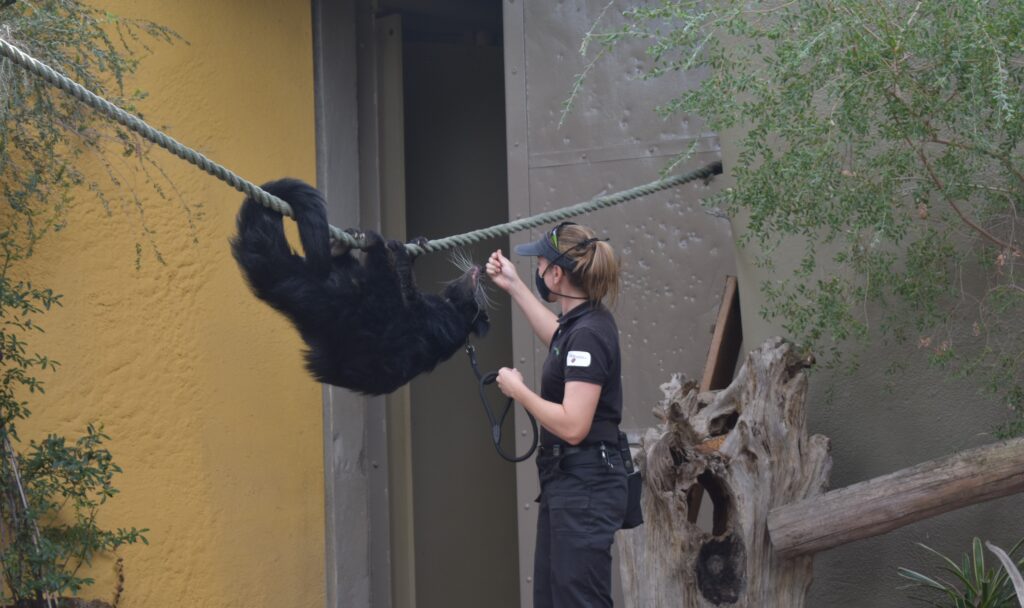
One of the main reasons for the decline in binturong populations is the harvesting of palm oil which leads to deforestation. Ms. Elkins encourages everyone to educate themselves about the types of ingredients in their food, like palm oil. She recommends downloading the Cheyenne Mountain Zoo Palm Oil app, that allows you to scan food and see if the product contains palm oil. This doesn’t mean palm oil is inherently bad, she just wants us to be more conscientious about where palm oil is coming from and pick a sustainable option that won’t hurt the rainforest. The two-toed sloth is another animal ambassador at the Zoo that is threatened, due to the illegal pet trade in South America. Tourists visiting South America come to see these animals, and may unknowingly be supporting unethical practices. In most cases, the animals at these attractions are not receiving the proper care that you would find at an accredited facility. Ms. Elkins wants Zoo guests to be informed when vacationing to different areas of the world so that they can support ethical organizations that are dedicated to conservation. With humans being the main cause of the decline of these species, we are the only ones that can save them. This starts by being aware of our day to day actions and how they impact wildlife.
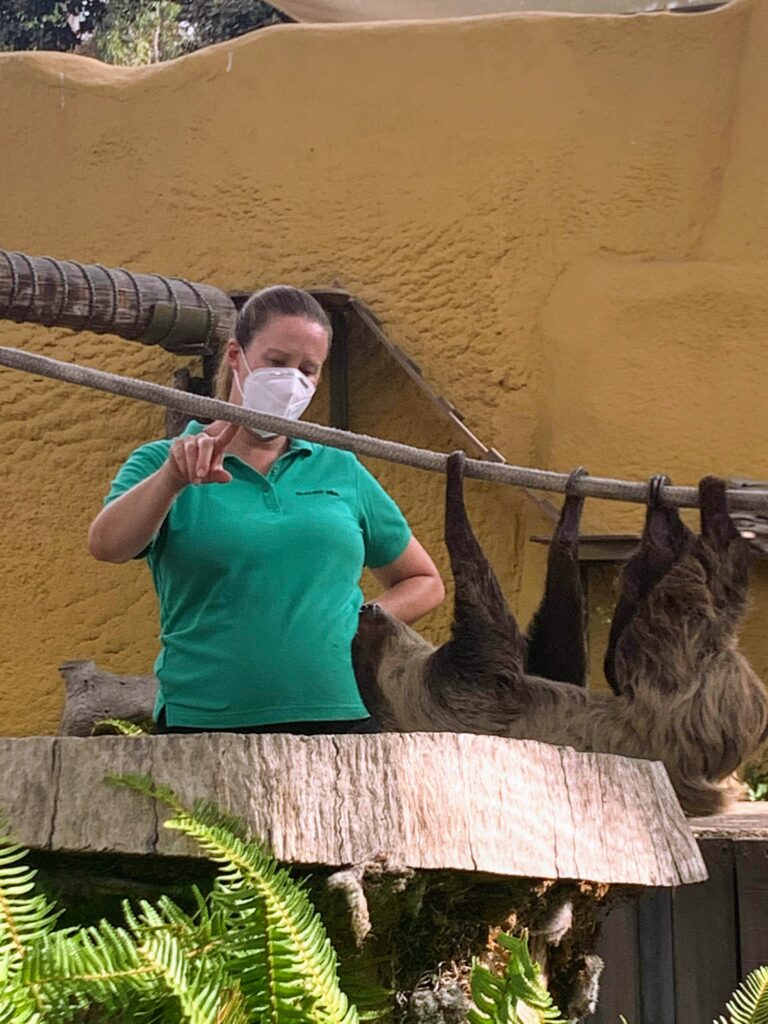
Wildlife Care Specialists at the Zoo come from a variety of backgrounds. Degrees in animal science, psychology, animal behavior, and exotic animal training are very common. Most of these specialists have years of volunteer work and conservation experience under their belt, which proves beneficial in their current careers. For these reasons, it takes a great deal of commitment to obtain a position like Ms. Elkins’. The amount of hands-on experience and knowledge required for her field is sizable, yet she is still passionate about getting young people to join the fight for conservation. She said students have plenty of volunteer options available to them, and advised us that volunteering at vet offices, kennels, animal rehabilitation centers, and college-run conservation programs are all good ways to get your foot in the door. She had three main pieces of advice for students considering career paths like hers: do your research, find the thing you love and pursue it, and get people excited. These will help you find success in nearly any field you apply yourself to.
The Animals in Action program is a vital part of the educational aspect of the Zoo. The connection that comes from this program is impactful in many ways. Guests are more likely to support conservation research and implement conservation actions in their everyday lives when they’ve experienced how unique each animal is firsthand. When guests remember the connection they had with an animal, they are more inclined to be a hero for wildlife. The work that Wildlife Care Specialists do proves how essential education is at zoos in order to have a bright and sustainable future.
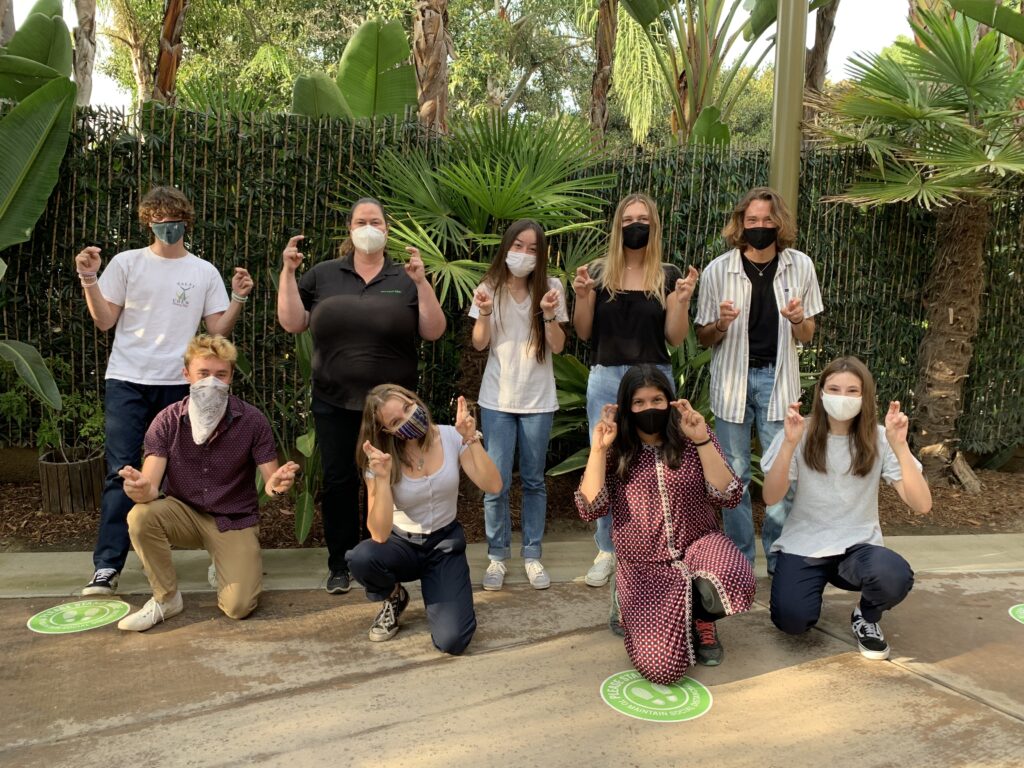
Week Two
Fall Session 2020


